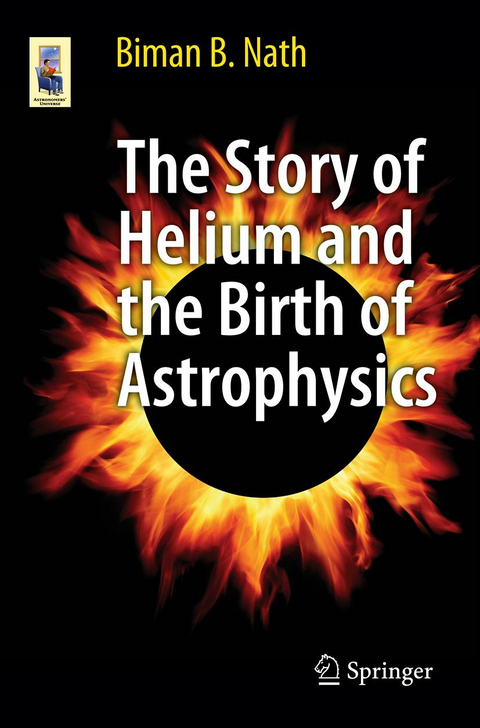
The Story of Helium and the Birth of Astrophysics
Springer-Verlag New York Inc.
978-1-4614-5362-8 (ISBN)
The truth is that Janssen never saw any sign of a new element during his observations in India. His reports and letters do not mention any such claim.
Other sources would have you believe that helium was jointly discovered by Janssen and Norman Lockyer, a British scientist, and that their discovery letters reached Paris the same day, one sent from India, and the other from England.
Again, the truth is completely different. Two letters from Lockyer and Janssen did reach Paris the same day in 1868, but their letters did not mention any new element. What they had discovered was a new way of observing the Sun without a solar eclipse. This would ultimately lead to the discovery of helium, in which Lockyer would play a prominent role, but not Janssen.
At the same time, Norman Robert Pogson, a disgruntled British astronomer stationed in India did notice something peculiar during the eclipse. He was the first one to notice something odd about the spectrum of the Sun that day, and his observations would prove crucial to Lockyer’s own investigations of helium. But Pogson’s report was never published inany peer reviewed journal and it languished on the desk of a local British officer in colonial India.
This book tells the real story behind the discovery of helium, along with biographical sketches of the scientists and descriptions of the milieu in which they worked. It will convey the excitement, confusion, and passion of nineteenth century scientists, using their own words, from their letters and reports.
“The Story of Helium and the Birth of Astrophysics” chronicles one of the most exciting discoveries ever made and explains why it also marked the birth of a new branch of science called ‘astrophysics.’
Biman Nath studied physics at the University of Delhi, India and received his Ph.D. in astronomy from the University of Maryland, College Park, in the United States. He is currently at the Raman Research Institute in Bangalore, India. His research focuses on the interaction of gas with galaxies and its implications for the evolution of galaxies and diffuse gas in the universe. He is also interested in the popularization of science and writing fiction.
Chapter 1: The Unbearable Lightness of a 'Noble' Element.- Chapter 2: From Alchemy to Chemistry.- Chapter 3: From Chemistry to Stars.- Chapter 4: Father Secchi, the Priest Who Became an Astronomer.- Chapter 5: Jansse, A Traveling Scientist.- Chapter 6: Norman Lockyer, Clerk Turned Astronomer.- Chapter 7: James F. Tennant, Soldier Turned Astronomer.- Chapter 8: Guntur, the Small Town at the Center of Attention.- Chapter 9: The Perpetual Eclipse of 1868.- Chapter 10: Lockyer and His Cosmic Hieroglyphics.- Chapter 11: The Ghost Element That Refused To Be Identified.- Chapter 12: Helium on Earth.- Chapter 13: The Folklore and Reality of the Discovery of Helium.- Index.
| Reihe/Serie | Astronomers' Universe |
|---|---|
| Zusatzinfo | 6 Illustrations, color; 31 Illustrations, black and white; XI, 274 p. 37 illus., 6 illus. in color. |
| Verlagsort | New York, NY |
| Sprache | englisch |
| Maße | 155 x 235 mm |
| Themenwelt | Sachbuch/Ratgeber ► Natur / Technik ► Weltraum / Astronomie |
| Naturwissenschaften ► Physik / Astronomie ► Astronomie / Astrophysik | |
| Naturwissenschaften ► Physik / Astronomie ► Atom- / Kern- / Molekularphysik | |
| Naturwissenschaften ► Physik / Astronomie ► Quantenphysik | |
| ISBN-10 | 1-4614-5362-3 / 1461453623 |
| ISBN-13 | 978-1-4614-5362-8 / 9781461453628 |
| Zustand | Neuware |
| Haben Sie eine Frage zum Produkt? |
aus dem Bereich


